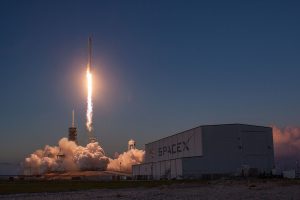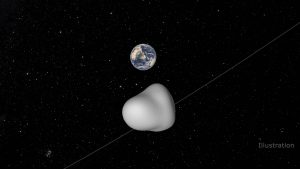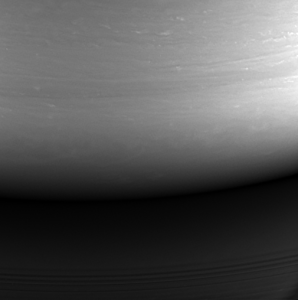Space X is once again heading our space news for the month. On October 11th the privately owned space corporation successfully reused one of its Falcon 9 first stage booster rockets for the third time . The rocket that put the Echo Star 105/SES-11 satellite into orbit had been used previously back on February the 19th to launch Space X’s Dragon resupply capsule on a mission to the International Space Station.
That launch back in February had been Space X’s first launch from NASA’s historic pad 39A, the same pad that had seen so many of the Apollo and Space Shuttle take offs. This was also Space X’s second successful launch in three days demonstrating the company’s increasing skill and competence in the task of launching payloads into space. The image below shows the liftoff of Space X’s Falcon 9.

Both of the first stages used in this week’s missions landed intact on Space X’s recovery barge. In fact Space X has now recovered their first stage boosters 18 times making the feat seem almost routine. By making both the recovery and reuse of their boosters routine Space X hopes to reduce the cost of getting into space, dollars per kilo to orbit, enough to greatly increase the amount of cargo going into space. This is something business types call ‘Economies of Scale’ which will help to drive down the cost of space travel even further.
One last word about Space X. Next year the company, along with their rival Boeing, is scheduled to begin test flights of their manned orbital capsules. According to NASA’s commercial crew program each company will perform one unmanned test flight to be followed by a manned flight late next year. Those flights will be the first time in seven years that astronauts will fly into orbit from American soil.
Another space event that got a bit of news play involved the close approach by the asteroid 2012 TC4. The asteroid, which is estimated to be about 30 meters across, came within 43,000 kilometers of Earth on the night of 12 October. Now 43,000 km may sound like a long way off but in terms of the solar system it’s a near miss. It is in fact only a little more than a tenth of the distance to the Moon. The image below shows a NASA illustration of what 2012 TC4 looked like as it passed by Earth.

In fact since 2012 TC4 was coming so close NASA decided to use the encounter as the first test of their ‘Planetary Defense System’. A system which one day may be used to deflect, or if necessary destroy, an asteroid on a collision course with our planet.
This initial test simply used NASA’s network of observatories to keep a closer watch on the asteroid’s trajectory as it went by. In 2024 however, NASA hopes to arrange a mission to actually alter the course of an asteroid. Not one on a collision course but another close encounter like 2012 TC4.
The mission is being called DART and the target is actually a pair of asteroids called Didymos that are bound together by their mutual gravity. The test will involve slamming a space probe into the smaller (~150m) asteroid in order to see how its orbit around its larger (800m) companion is effected. From the results of the experiment NASA hopes to learn just how much push would be needed to alter an asteroid’s course enough to prevent a collision in the future. The long term goal would be protect the Earth from disasters such as the one that killed off the dinosaurs.
One final item before I leave. Last month (13Sept17) I wrote a post about the final days of NASA’s Cassini spacecraft before it plunged into the atmosphere of the planet Saturn. Now the Jet Propulsion Labouratory (JPL) and NASA have released some of the details of the doomed space probe’s final minutes. According to JPL Cassini ‘put up a fight’ and fired it thrusters for 91 seconds trying desperately to keep its antenna pointed toward Earth and transmitted data until the last second.
By greatly exceeding its designer’s expectations it’s as if Cassini had acquired something of a personality, a determination to carry out its mission to the end. And it’s not just Cassini. The Voyager probes are still sending us information on interstellar space after more than 40 years and the Lost Horizon spacecraft is now preparing for a flyby of a Kuiper belt object. It’s almost as if these interplanetary explorers are becoming the first mechanical heroes.
Oh I know that’s kind of silly. Or is it, after all who knows what our space probes will be like a hundred years from now. Cassini’s final image, transmitted to Earth even as the probe was falling into Saturn’s atmosphere is below.

